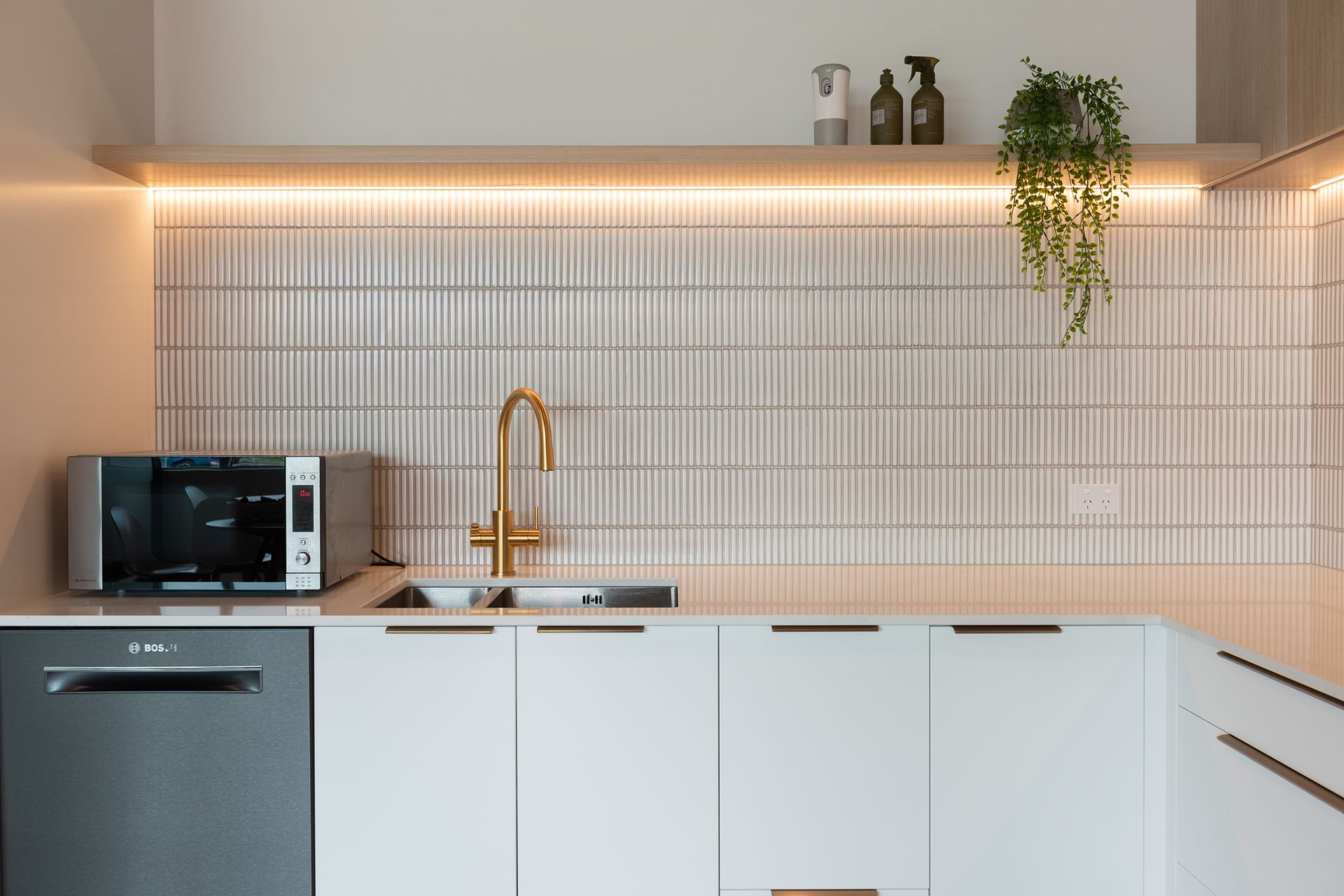Trend report: 5 tile styles for your kitchen, bathroom and beyond
Written by
09 November 2022
•
4 min read

1. Large-format tiles
“Tiles continue to push the envelope in fashion and design. As technology has allowed, tile design has benefited from far better resolution printing and unique textural surfaces. This design in surfaces, patterns and formats has continued to evolve a huge amount, which has allowed for some amazing floor and wall tiles to reach the market,” says Larry Harrison, director at Quantum.
Something most notable is the dramatic increase in the size of tiles – a key change Larry has seen in Quantum’s 20 years of operation.
“Tiles in the 330 by 330mm size used to be the typical format available, however they have gradually increased to the 600 by 600mm format which remains the more common size we see today. However, thanks to technology, sizes ranging from 1200 by 600mm up to 1800 by 900mm are becoming increasingly popular.
“The onset of large slab material using thin porcelain has also really upped the game in tile manufacturing. We’re now seeing porcelain slabs of up to 1.6 by 3.2 metres, which is pretty impressive once installed.”
With reduced grout lines, these larger-format tiles create a striking, seamless aesthetic, and, ultimately, an increased sense of space – a popular choice for designers.
2. Mosaics and finger tiles
However, the opposite is also proving to be popular.
“There is also a return to smaller format feature products like decorative wall tiles,” says Larry. “There seems to be quite a lot of that hitting the market and we have a number of fresh collections that will be arriving in the new year such as smaller, elongated finger tiles.”
Also known as kit-kat tiles, these slim tiles complement a range of interior styles and can be installed vertically or horizontally for instant texture and visual interest. Inspired by traditional Japanese pottery and glazing – and the Japanese design approach towards simplicity – the tiles exude a contemporary minimalist aesthetic and are often seen in Japandi (a fusion of Japanese and Scandinavian) designs.
3. Colours
“Colours are continuing to surface,” says Larry. For those that want to introduce a pop of colour without overpowering the rest of the space, pastels are an elegant choice.
The reason for seeing more colour entering New Zealand homes through the use of porcelain and ceramic tiles?
“There’s a growing appetite for introducing a bit of colour into design, which is nice to see,” says Larry. “It means people are building or renovating bathrooms that they will enjoy, not necessarily only considering how their choices will impact resale. Previously we’ve seen people play the 'safe card' by only using white, grey and charcoal – classic New Zealand colours. Whilst they look great, it’s predictable.”
Pastel pinks and oranges are a playful addition to an interior, while colours such as pastel blues and greens can have a calming effect – ideal for spaces of relaxation such as the bathroom.
“Consider Quantum’s Earth Wall Tiles, for example – an ode to nature’s nuanced and varying colours,” says Larry.
“The colours bring a lot of interest to our showroom.”
4. Natural tones and textures
Equally as calming as pastel blue is the use of natural hues and textures – a trend the Quantum team saw on display at the 39th edition of Cersaie, the International Exhibition of Ceramic Tile and Bathroom Furnishings this year.
Tactile stone surfaces, terracottas and handcrafted ceramic tiles with organic edges are also favoured by interior designers, stylists and architects to create a sense of serenity – both in residential and commercial projects.
“In New Zealand, we tend to explore the option of using a more natural look and feel in typical tiled spaces, which are often designed to replicate stone or imitate design elements such as concrete or metal,” says Larry. “At Quantum, we love texture and when considering some of the latest tile collections we’re now working with, you can really improve the sense of style and design in a space. Also, with what you’d typically see in the home, we’re also seeing this flow into commercial installations – including the ablutions and lobby areas which is encouraging and exciting to see.”
5. Stepping beyond the bathroom and kitchen
Larry also suggests that we will continue seeing tiles used throughout more of the home.
“As New Zealand’s architecture continues to embrace passive energy and incorporate more sun into living spaces with full-height glass windows, we’re seeing a shift. There’s a desire for something very durable that isn’t affected by the elements.
“Tiles don’t fade, they’re resilient, don’t deteriorate and aren’t affected by water. With the advent of high-quality, stunning timber-effect porcelain planks, this is also an increasingly popular choice with discerning homeowners looking for a cost-effective and durable floor.”
Explore the range of floor and wall tiles at Quantum.
Words by Cassie Birrer






